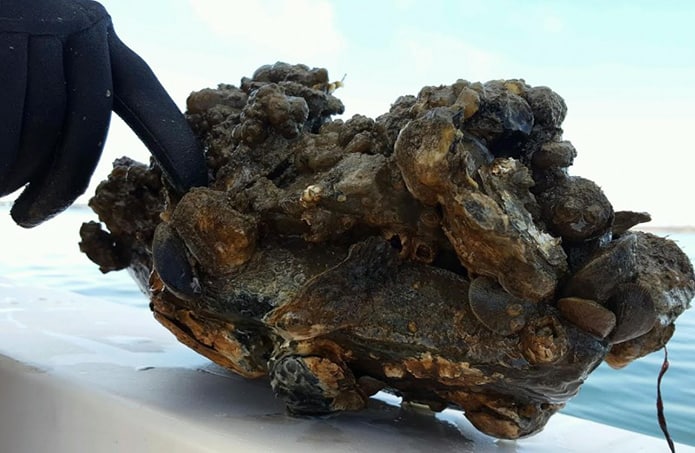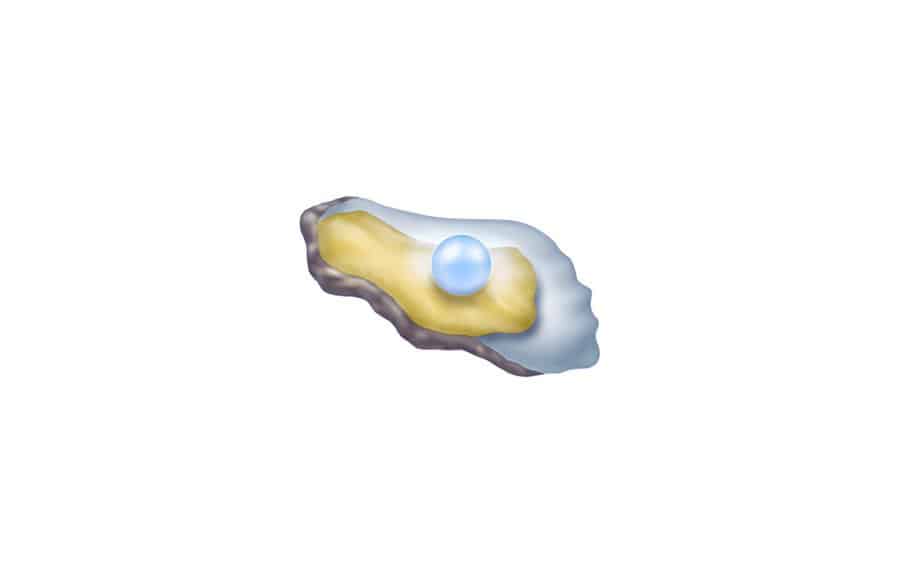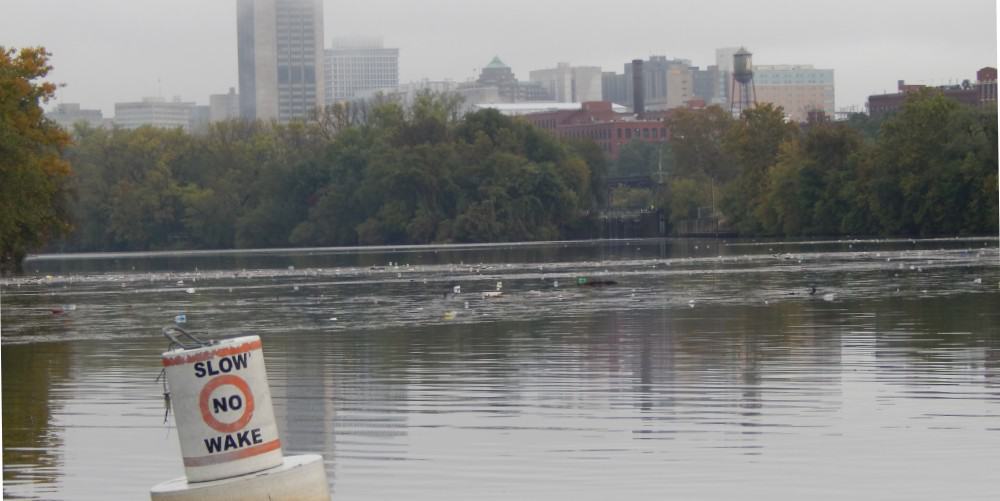By Timothy B. Wheeler, Bay Journal News Service
A clump of oysters pulled up from a restored reef in Maryland’s Harris Creek. Photo: U.S. Army Corps of EngineersWith Maryland’s watermen urging him to do so, Gov. Larry Hogan on Thursday vetoed legislation that would block any changes to the boundaries of oyster sanctuaries in five Chesapeake Bay tributaries without legislative approval.
“This bill is bad policy, is bad for our watermen, and — worst of all — is bad for the Chesapeake Bay,” Hogan said in a strongly worded veto message to legislative leaders. The governor’s office released five letters urging him to veto the bill, four of them from groups representing watermen.
Hogan’s veto is unlikely to stand. The House voted 96 to 43 to override the veto Friday, and the Senate passed the original legislation by a smaller but also veto-proof majority.
The 90-day session ends Monday at midnight.
The Chesapeake Bay Foundation, which had pushed for the legislation, issued a statement Thursday night calling Hogan’s veto “extremely short-sighted” and urged the Assembly to override it. House Speaker Michael Busch, a chief sponsor of the bill in his chamber, likewise issued a statement taking Hogan to task:
“It’s unfortunate that the Governor vetoed this bipartisan bill to protect Maryland’s oysters,” Busch said. “As Governor Hogan loudly lobbies for federal Chesapeake Bay funds, he quietly vetoed legislation that is critical to the health of the Bay.”
In his veto message, the governor leveled harsh criticism at the Bay Foundation as well as at legislators who voted for the bill, saying they had undermined his administration’s efforts to forge a consensus over the stewardship of the state’s oyster population.
Watermen and environmentalists have frequently been at odds over oysters and have been especially so on this bill. Once abundant, and harvested with abandon, the Bay’s oyster population has dwindled to 1% or 2% of historic levels, in the estimation of some scientists. Causes of their decline include overfishing, habitat loss, pollution and diseases that can kill the young bivalves before they can grow large enough to harvest.
In 2010, at the urging of scientists and environmentalists, the state expanded its network of oyster sanctuaries off limits to commercial harvest, seeking to preserve a larger share of the bivalves for their ecological value, as filterers of water and habitat for fish, crabs and other marine life. Watermen complained bitterly about the expansion, contending the state had taken away their most productive reefs. (Harvest data, though, indicate relatively little catch was coming from most of the areas by the time they were made sanctuaries.)
Then, in 2014, Maryland pledged as part of the regional Chesapeake Bay Watershed Agreement to restore oyster populations in five of its tributaries by 2025. Restoration is essentially complete in Harris Creek and in various stages of construction or planning in the other four — the Tred Avon, Little Choptank, St. Mary’s and Manokin rivers. Major portions of all five are in sanctuaries, off limits to commercial harvest of oysters.
Watermen have complained about the cost and methods used in the large-scale restoration projects, and they have questioned the viability of the sanctuaries. Surveys have found that the oysters in Harris Creek, which was stocked with 2 billion hatchery-reared bivalves, are thriving and reproducing, but watermen question that as well.
The sanctuaries’ boundaries were created by regulation, but the state Department of Natural Resources could change them by revising the rules, and at the urging of watermen it has considered doing so.
Two years ago, the DNR floated a plan to open some sanctuaries to try “rotational” harvest, a method employed in Virginia where oysters are harvested only every few years to allow reefs a chance to recover. Maryland’s watermen were pressing for more areas to work in at the time because harvests from public fishery areas had begun to decline.
But the General Assembly blocked that move, passing legislation barring any change to any sanctuaries until the DNR completed a scientific assessment of the state’s oyster population and of the sustainability of the harvests.
That assessment, released late last year, found that Maryland’s stock of market-size oysters declined by half from 1999 to 2018. The study, conducted with the University of Maryland Center for Environmental Science, also found that more than half of the state’s waters open to commercial harvest were being overfished.
Hogan argued that the bill undermines the recent success of a stakeholder group including both watermen and environmentalists to forge a consensus on how to manage oysters in the Choptank region, which includes three of the five restoration tributaries — Harris Creek and the Tred Avon and Little Choptank rivers.
The OysterFutures group, organized by UMCES, had urged the state to allow “rotational” harvesting in the sanctuary in the Little Choptank. The DNR has said it is considering the group’s proposals.
The sanctuary bill “circumvents that progress,” Hogan wrote. Echoing bitter complaints voiced by watermen at hearings on the measure, the governor contended that its passage “demonstrates outright contempt for those who were asked to work together to arrive at a consensus solution over the past four years.”
Hogan essentially accused the Bay Foundation of duplicity, saying it had participated in the OysterFutures deliberations, had joined in endorsing its recommendations to open a sanctuary and then had sought legislation to thwart it.
“The lack of regard for others, for the process, and for oysters is disgraceful and is apparent in the actions of the Chesapeake Bay Foundation,” the governor said.
In a statement, Alison Prost, the CBF’s Maryland executive director, said the organization had signed onto the OysterFutures recommendations as a group, which also included provisions to increase oyster fishery taxes, limit access to the fishery and work with federal partners to complete oyster restoration projects.
“A positive result for the oyster population only would happen if all the recommendations were put in place simultaneously,” Prost said. “In the year since these recommendations were finalized, the Department of Natural Resources has taken no actions to implement any of the OysterFutures recommendations. CBF agreed to them as a package, not each one as an individual policy proposal.”




